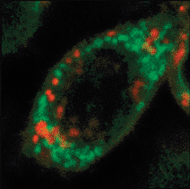Using fluorescent pH-sensitive nanosensors to report their intracellular location after Tat-mediated delivery
Abstract
Nanosensors offer the opportunity to measure

Maintenance work is planned for Wednesday 1st May 2024 from 9:00am to 11:00am (BST).
During this time, the performance of our website may be affected - searches may run slowly and some pages may be temporarily unavailable. If this happens, please try refreshing your web browser or try waiting two to three minutes before trying again.
We apologise for any inconvenience this might cause and thank you for your patience.
* Corresponding authors
a
Laboratory of Biophysics and Surface Analysis, School of Pharmacy, University of Nottingham, University Park, Nottingham, UK
E-mail:
jon.aylott@nottingham.ac.uk
Fax: +44 (0) 115 9515102
Tel: +44 (0) 115 9516229
b Institute of Cell Signalling, School of Biomedical Sciences, University of Nottingham Medical School, Nottingham, UK
Nanosensors offer the opportunity to measure

 Please wait while we load your content...
Something went wrong. Try again?
Please wait while we load your content...
Something went wrong. Try again?
 Fetching data from CrossRef.
Fetching data from CrossRef.
This may take some time to load.
Loading related content
